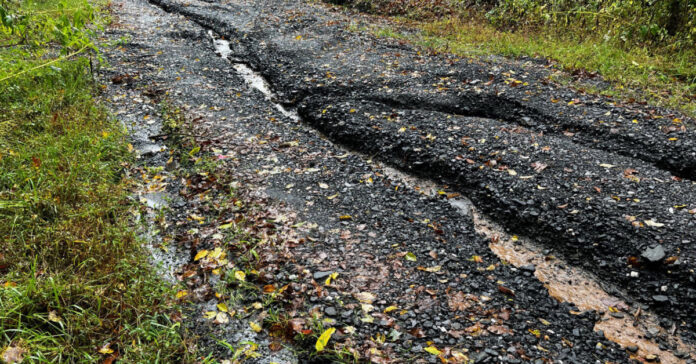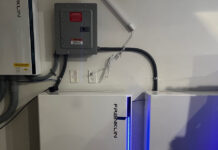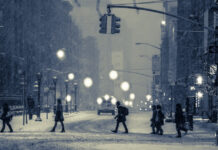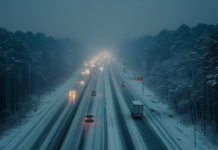I was unconvinced that the effects of Hurricane Helene would reach us as anything worse than a normal heavy storm. Then the power went out for eight hours, and with it our Internet service. I guess I was wrong!
Thanks to our solar power system, we still cooked meals on the stove and used the normal lights, just not as many as we might have if the sun had been shining and our panels were producing power. We also went into the service panel and flipped circuit breaks to reduce our power draw. We turned off the guest room, guest bath, the oven, and the dryer. It probably saves us just a few watts, but it’s a reminder not to run something when the power is out. Most of the time, we don’t think twice about the alarm clock and the charging brick in the guest room, but why waste a few watts if you don’t have to? As a result of our conservation efforts, we used only 20 percent of our battery capacity in those eight hours. That’s less than 1,000 watts per hour.
Our fear was that the power would remain out until Friday night or Saturday, 36 or more hours. Since it came back on, we have recharged our batteries back up to 100 percent. We have rain in the forecast all day Friday, so it’s quite possible we’ll lose power again.
Road Damage
I walked the dog down the road and the damage was heavy. No fallen tree limbs, but quite a bit of erosion. I had an appointment and three errands planned for Thursday, so I loaded my muck boots and my poncho into the truck in case I had to walk home and headed to town. As I drove further down the mountain, conditions got progressively worse. Nothing like a hard rain to carve a deep crevice, or two, in the middle of the road. (See main image.)
Driving at speeds of six to eight MPH, I navigated my way down the road. When I reached a point that I could pick up cell service, I received a message that my appointment had been canceled. I turned around and drove back up the mountain, figuring the other errands could wait.
I’m afraid to see what it looks like by Saturday after the storm hits us. We might be trapped up here for a few days until DOT can repair the road.
Prepping for the Storm
The early rain surprised us, but we were OK because we had done the normal storm-prep things, like bringing in the wind chimes and hanging plants so they do not become guided missiles.
Our outdoor furniture is on the deck. It is unlikely to blow away, but past storms have moved the chairs around. We turned the table upside down and the chair sideways so they won’t fall over, and jammed them against the house.
I charged three headlamps, a lantern, a battery bank, and sixteen 18650 batteries. Most of the 18650s were last charged in April and are still showing a very high charge. Most were above 4.12 volts prior to being charged (4.20 is the max charge). The battery in my EDC flashlight needed the most charging. It was showing only 3.76 volts. Headlamps are very handy when trying to save power. Wearing a headlamp alleviates the need to turn on a light switch when you walk into or through a room.
I also topped off our 18-volt Ryobi batteries and the 20-volt Black & Decker rechargeables for our tools. We don’t expect to use these, so it is a “just in case” move.
Gutters
When it rains extremely hard, our gutters overflow. I’ve checked them, and they are clean. When it rains a moderate amount, you can put your hand on the downspout and feel the water rushing through it. So what is the problem? I am convinced the downspouts are undersized. When it rains extra hard, so much water runs down the roof and into the gutter that the downspout just can’t handle the volume. As a result, the gutters fill up and overflow.
On the downhill side of the house—we are built into the side of a mountain—this is no problem because the extra water runs downhill, away from the house. On the uphill side of the house, the water can cause standing pools. We did some work this year to install a French drain and a couple open field drains. The new drains are working, and the standing water eventually gets sucked in and away, but extreme rain can send more water to the drain than the 4-inch black corrugated pipes can handle. Still, we haven’t had any problems with water leaking into the basement, and we hope to continue to this record.
In addition to the French drain, we improved the ditch that captures rain coming off the mountain and redirects to the culvert under our driveway. That was working well when I checked it.
Florida and Other Points South
Televised reports from Florida show this is a hell of a storm. I’m sure most networks wish it had roared ashore at 10 a.m. instead of the middle of the night so they could have more dramatic footage. Still, it’s a reminder of why I don’t live in Florida or a coastal area.
We have friends near the Virginia/North Carolina border that are reporting flood conditions, even though the hurricane is still miles away. I expect we’ll see more flooding in the Southeast in the days ahead.
Be safe, and remember, natural disasters are just one of many reasons to be prepared.







